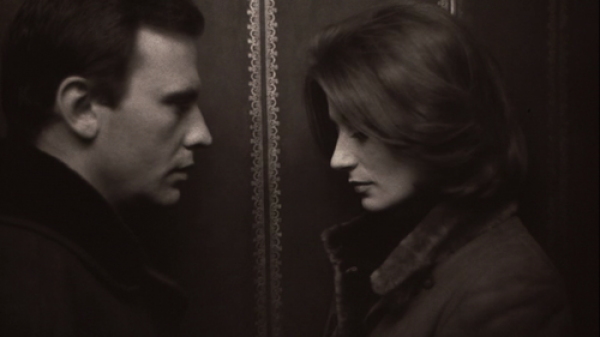
Anouk Aimée and Jean-Louis Trintignant play characters trying to escape their pasts in Claude Lelouch’s A MAN AND A WOMAN
A MAN AND A WOMAN (UN HOMME ET UNE FEMME) (Claude Lelouch, 1966)
Film Forum
209 West Houston St.
Sunday, December 16, and Monday, December 17
Series runs through December 20
212-727-8110
www.filmforum.org
 Winner of both the Oscar for Best Foreign Language Film and the Palme d’Or at Cannes, Claude Lelouch’s A Man and a Woman is one of the most popular, and most unusual, romantic love stories ever put on film. Oscar-nominated Anouk Aimée stars as Anne Gauthier and Jean-Louis Trintignant as Jean-Louis Duroc, two people who each has a child in a boarding school in Deauville. Anne, a former actress, and Jean-Louis, a successful racecar driver, seem to hit it off immediately, but they both have pasts that haunt them and threaten any kind of relationship. Shot in three weeks with a handheld camera by Lelouch, who earned nods for Best Director and Best Screenplay (with Pierre Uytterhoeven), A Man and a Woman is a tour-de-force of filmmaking, going from the modern day to the past via a series of flashbacks that at first alternate between color and black-and-white, then shift hues in curious, indeterminate ways. Much of the film takes place in cars, either as Jean-Louis races around a track or the protagonists sit in his red Mustang convertible and talk about their lives, their hopes, their fears. The heat they generate is palpable, making their reluctance to just fall madly, deeply in love that much more heart-wrenching, all set to a memorable soundtrack by Francis Lai. Lelouch, Trintignant, and Aimée revisited the story in 1986 with A Man and a Woman: 20 Years Later, without the same impact and success. A new print of the original will be shown December 16-17 in a grand double feature with Eric Rohmer’s My Night at Maud’s as part of Film Forum’s two-week tribute to Trintignant, leading up to the theatrical release of the French star’s latest, Michael Haneke’s remarkable Palme d’Or winner Amour, which once again displays the actor’s unique range and sensitivity in an unforgettable performance that is likely to finally make him much better known in the United States, at the tender age of eighty-two.
Winner of both the Oscar for Best Foreign Language Film and the Palme d’Or at Cannes, Claude Lelouch’s A Man and a Woman is one of the most popular, and most unusual, romantic love stories ever put on film. Oscar-nominated Anouk Aimée stars as Anne Gauthier and Jean-Louis Trintignant as Jean-Louis Duroc, two people who each has a child in a boarding school in Deauville. Anne, a former actress, and Jean-Louis, a successful racecar driver, seem to hit it off immediately, but they both have pasts that haunt them and threaten any kind of relationship. Shot in three weeks with a handheld camera by Lelouch, who earned nods for Best Director and Best Screenplay (with Pierre Uytterhoeven), A Man and a Woman is a tour-de-force of filmmaking, going from the modern day to the past via a series of flashbacks that at first alternate between color and black-and-white, then shift hues in curious, indeterminate ways. Much of the film takes place in cars, either as Jean-Louis races around a track or the protagonists sit in his red Mustang convertible and talk about their lives, their hopes, their fears. The heat they generate is palpable, making their reluctance to just fall madly, deeply in love that much more heart-wrenching, all set to a memorable soundtrack by Francis Lai. Lelouch, Trintignant, and Aimée revisited the story in 1986 with A Man and a Woman: 20 Years Later, without the same impact and success. A new print of the original will be shown December 16-17 in a grand double feature with Eric Rohmer’s My Night at Maud’s as part of Film Forum’s two-week tribute to Trintignant, leading up to the theatrical release of the French star’s latest, Michael Haneke’s remarkable Palme d’Or winner Amour, which once again displays the actor’s unique range and sensitivity in an unforgettable performance that is likely to finally make him much better known in the United States, at the tender age of eighty-two.
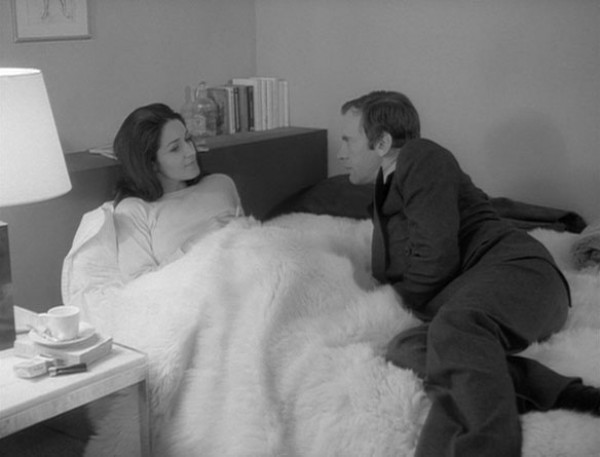
Jean-Louis (Jean-Louis Trintignant) is more than a little intrigued by Maud (Françoise Fabian) in the fourth of Eric Rohmer’s Six Moral Tales
MY NIGHT AT MAUD’S (MA NUIT CHEZ MAUD) (Eric Rohmer, 1969)
Film Forum
209 West Houston St.
Sunday, December 16, and Monday, December 17
Series runs through December 20
212-727-8110
www.filmforum.org
 Nominated for the Palme d’Or and a Best Foreign Language Film Oscar, My Night at Maud’s, Éric Rohmer’s fourth entry in his Six Moral Tales series (Clarie’s Knee, Love in the Afternoon), continues the French director’s fascinating exploration of love, marriage, and tangled relationships. Three years removed from playing the romantic racecar driver Jean-Louis in Claude Lelouch’s A Man and a Woman, Jean-Louis Trintignant again stars as a man named Jean-Louis, this time a single thirty-four-year-old Michelin engineer living a relatively solitary life in the French suburb of Clermont. A devout Catholic, he is developing an obsession with a fellow churchgoer, the blonde, beautiful Françoise (Marie-Christine Barrault), about whom he knows practically nothing. After bumping into an old school friend, Vidal (Antoine Vitez), the two men delve into deep discussions of religion, Marxism, Pascal, mathematics, Jansenism, and women. Vidal then invites Jean-Louis to the home of his girlfriend, Maud (Françoise Fabian), a divorced single mother with open thoughts about sexuality, responsibility, and morality that intrigue Jean-Louis, for whom respectability and appearance are so important. The conversation turns to such topics as hypocrisy, grace, infidelity, and principles, but Maud eventually tires of such talk. “Dialectic does nothing for me,” she says shortly after explaining that she always sleeps in the nude. Later, when Jean-Louis and Maud are alone, she tells him, “You’re both a shamefaced Christian and a shamefaced Don Juan.” Soon a clearly conflicted Jean-Louis is involved in several love triangles that are far beyond his understanding, so he again seeks solace in church. My Night at Maud’s is a classic French tale, with characters spouting off philosophically while smoking cigarettes, drinking wine and other cocktails, and getting naked. Shot in black-and-white by Nestor Almendros, the film roams from midnight mass to a single woman’s bed and back to church, as Jean-Louis, played with expert concern by Trintignant, is forced to examine his own deep desires and how they relate to his spirituality. Fabian (Belle de Jour, The Letter) is outstanding as Maud, whose freedom titillates and confuses Jean-Louis. One of Rohmer’s best, most accomplished works despite its haughty intellectualism, My Night at Maud’s is screening December 16-17 at Film Forum in a terrific double feature with A Man and a Woman as part of its “Trintignant” series.
Nominated for the Palme d’Or and a Best Foreign Language Film Oscar, My Night at Maud’s, Éric Rohmer’s fourth entry in his Six Moral Tales series (Clarie’s Knee, Love in the Afternoon), continues the French director’s fascinating exploration of love, marriage, and tangled relationships. Three years removed from playing the romantic racecar driver Jean-Louis in Claude Lelouch’s A Man and a Woman, Jean-Louis Trintignant again stars as a man named Jean-Louis, this time a single thirty-four-year-old Michelin engineer living a relatively solitary life in the French suburb of Clermont. A devout Catholic, he is developing an obsession with a fellow churchgoer, the blonde, beautiful Françoise (Marie-Christine Barrault), about whom he knows practically nothing. After bumping into an old school friend, Vidal (Antoine Vitez), the two men delve into deep discussions of religion, Marxism, Pascal, mathematics, Jansenism, and women. Vidal then invites Jean-Louis to the home of his girlfriend, Maud (Françoise Fabian), a divorced single mother with open thoughts about sexuality, responsibility, and morality that intrigue Jean-Louis, for whom respectability and appearance are so important. The conversation turns to such topics as hypocrisy, grace, infidelity, and principles, but Maud eventually tires of such talk. “Dialectic does nothing for me,” she says shortly after explaining that she always sleeps in the nude. Later, when Jean-Louis and Maud are alone, she tells him, “You’re both a shamefaced Christian and a shamefaced Don Juan.” Soon a clearly conflicted Jean-Louis is involved in several love triangles that are far beyond his understanding, so he again seeks solace in church. My Night at Maud’s is a classic French tale, with characters spouting off philosophically while smoking cigarettes, drinking wine and other cocktails, and getting naked. Shot in black-and-white by Nestor Almendros, the film roams from midnight mass to a single woman’s bed and back to church, as Jean-Louis, played with expert concern by Trintignant, is forced to examine his own deep desires and how they relate to his spirituality. Fabian (Belle de Jour, The Letter) is outstanding as Maud, whose freedom titillates and confuses Jean-Louis. One of Rohmer’s best, most accomplished works despite its haughty intellectualism, My Night at Maud’s is screening December 16-17 at Film Forum in a terrific double feature with A Man and a Woman as part of its “Trintignant” series.
 The guys who gave the world Thirtysomething (director Edward Zwick and producer Marshall Herskovitz) head to the hills of Japan for this ridiculously sappy and melodramatic piece of tripe starring Tom Cruise as a wayward Civil War hero who rediscovers himself and learns the way of the samurai as modernity threatens to bury the past in a battle of guns versus swords, power versus honor, the government versus the individual. Cruise dances with warriors through this pathetic excuse for an American samurai epic that reduces everything to annoying clichés. It’s an embarrassment from start to finish; at least a sequel is pretty much out of the question. And it’s painful how the film misuses the talent of Hiroyuki Sanada, who was so good in Yoji Yamada’s The Twilight Samurai, his previous film. This mess was written by John Logan, who is responsible for such other duds as Martin Scorsese’s vastly overrated The Aviator and Nemesis, perhaps the worst of all the Star Trek films. The Last Samurai is screening on December 20 at 3:30 as part of the Film Society of Lincoln Center series “All the Right Moves: The Films of Tom Cruise,” comprising seven Cruise favorites, including Risky Business, Rain Man, Jerry Maguire, Mission: Impossible, Born on the Fourth of July, and Top Gun.
The guys who gave the world Thirtysomething (director Edward Zwick and producer Marshall Herskovitz) head to the hills of Japan for this ridiculously sappy and melodramatic piece of tripe starring Tom Cruise as a wayward Civil War hero who rediscovers himself and learns the way of the samurai as modernity threatens to bury the past in a battle of guns versus swords, power versus honor, the government versus the individual. Cruise dances with warriors through this pathetic excuse for an American samurai epic that reduces everything to annoying clichés. It’s an embarrassment from start to finish; at least a sequel is pretty much out of the question. And it’s painful how the film misuses the talent of Hiroyuki Sanada, who was so good in Yoji Yamada’s The Twilight Samurai, his previous film. This mess was written by John Logan, who is responsible for such other duds as Martin Scorsese’s vastly overrated The Aviator and Nemesis, perhaps the worst of all the Star Trek films. The Last Samurai is screening on December 20 at 3:30 as part of the Film Society of Lincoln Center series “All the Right Moves: The Films of Tom Cruise,” comprising seven Cruise favorites, including Risky Business, Rain Man, Jerry Maguire, Mission: Impossible, Born on the Fourth of July, and Top Gun.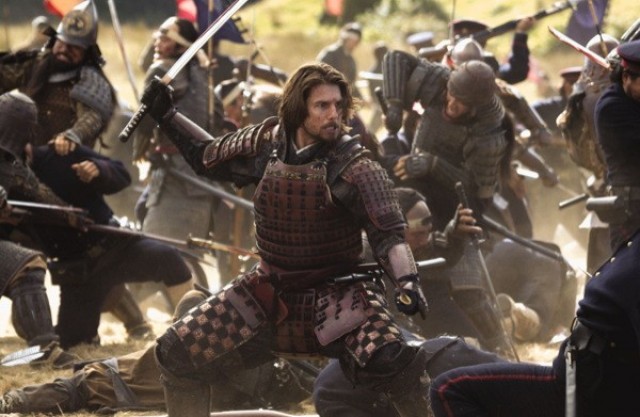
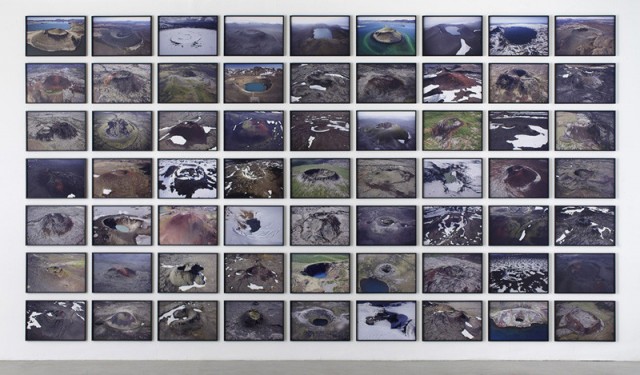

 Sixth Generation Chinese film director Jia Zhangke won the Golden Lion for Best Film at the Venice Film Festival for Still Life, his beautiful, elegiac, documentary-like examination of displaced family. Jia sets his film around the ongoing, controversial Three Gorges Dam project, which has forced millions of residents from their homes. Han Sanming, a miner from Shanxi, arrives in the former town of Fengjie, looking for the daughter he hasn’t seen in sixteen years, since she was a baby. Meanwhile, a young nurse, Shen Hong, is seeking out her husband, a construction executive whom she hasn’t heard from in two years. Using nonprofessional actors, Jia (Platform, The World) tells their heartbreaking stories virtually in slow motion, with many scenes driven by Han’s tired eyes, featuring little or no dialogue. He gets a job helping tear down buildings, in direct contrast to his desire to rebuild his relationship with his long-lost family. Jia’s gentle camera reveals how China, in its quest for modernization and financial power, has left behind so many of its people, the heart and soul of the land that has literally been torn out from under them. A small gem, Still Life is screening December 20 at 9:00 in a new 35mm print as part of the IFC Center series “Road Movies: Directed and Selected by Walter Salles,” in conjunction with the December 21 theatrical release of Salles’s adaptation of Jack Kerouac’s On the Road.
Sixth Generation Chinese film director Jia Zhangke won the Golden Lion for Best Film at the Venice Film Festival for Still Life, his beautiful, elegiac, documentary-like examination of displaced family. Jia sets his film around the ongoing, controversial Three Gorges Dam project, which has forced millions of residents from their homes. Han Sanming, a miner from Shanxi, arrives in the former town of Fengjie, looking for the daughter he hasn’t seen in sixteen years, since she was a baby. Meanwhile, a young nurse, Shen Hong, is seeking out her husband, a construction executive whom she hasn’t heard from in two years. Using nonprofessional actors, Jia (Platform, The World) tells their heartbreaking stories virtually in slow motion, with many scenes driven by Han’s tired eyes, featuring little or no dialogue. He gets a job helping tear down buildings, in direct contrast to his desire to rebuild his relationship with his long-lost family. Jia’s gentle camera reveals how China, in its quest for modernization and financial power, has left behind so many of its people, the heart and soul of the land that has literally been torn out from under them. A small gem, Still Life is screening December 20 at 9:00 in a new 35mm print as part of the IFC Center series “Road Movies: Directed and Selected by Walter Salles,” in conjunction with the December 21 theatrical release of Salles’s adaptation of Jack Kerouac’s On the Road.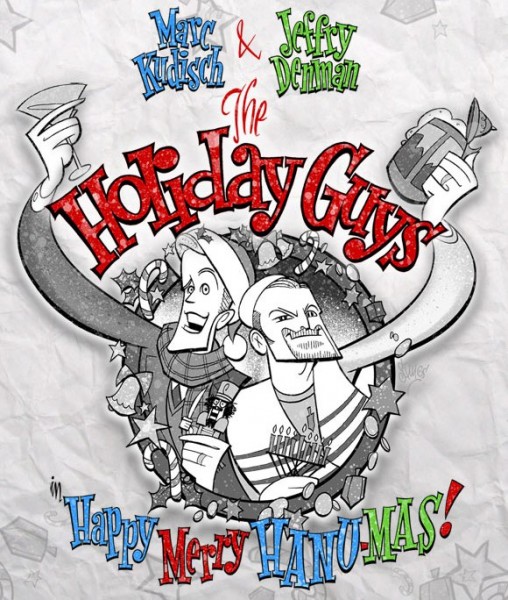

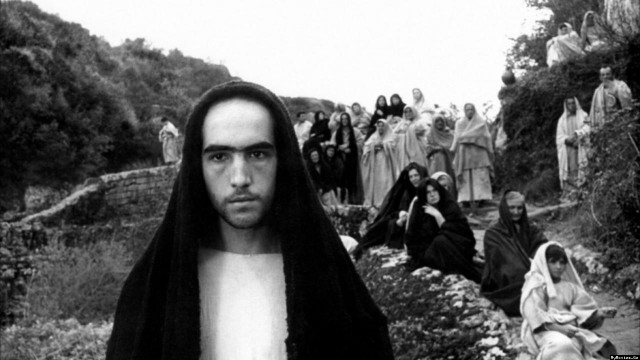
 A biblical epic like no other, Pier Paolo Pasolini’s The Gospel According to St. Matthew is filled with poetic imagery, stark landscapes, and, perhaps most amazingly, a non-preachy style. Taking dialogue straight from the bible, which he read while holed up in a hotel room in Assisi during a visit by the pope, Pasolini, an avowed atheist, Marxist, and homosexual, personalizes the story by setting it in Basilicata in Matera and casting his own mother as the older Mary. A glum Jesus is played by Enrique Irazoqui, a nineteen-year-old student who came to Pasolini in order to write a paper about him. Dedicated to Pope John XXIII, The Gospel According to St. Matthew is documentary-like in its execution, using nonprofessional actors to tell the story of Christ’s birth, prophesizing, death, and resurrection. Shot in black-and-white by Tonino Delli Coli with an art-historical eye harkening back to the Italian Renaissance and the Baroque period, the film is more bleak and less reverential than most biblical epics, evoking the poverty and political revolution that was sweeping Pasolini’s home country and the world in the 1950s and 1960s, as well as the Second Vatican Council and the auteur’s own run-ins with persecution based on ideology. (At one point Pasolini considered casting Jack Kerouac as Jesus.) The score ranges from Bach’s “Matthäus Passion (BWV 244)” and Mozart’s “Mauerische Trauermusik in c minor (KV 477)” to Odetta’s haunting “Sometimes I Feel Like a Motherless Child” and Blind Willie Johnson’s “Dark Was the Night, Cold Was the Ground,” again setting it apart from the traditional story. The Gospel According to St. Matthew is screening December 19 and 31 as part of MoMA’s “Pier Paolo Pasolini” series, a full career retrospective that includes such other films as Sopraluoghi in Palestina per il film Il Vangelo secondo Matteo (In Search of Locations for ‘The Gospel According to Matthew’), Uccellacci e uccellini (Hawks and Sparrows), Mamma Roma, and Teorema (Theorem). In addition, the exhibition “Pier Paolo Pasolini, Portraits and Self Portraits” continues at
A biblical epic like no other, Pier Paolo Pasolini’s The Gospel According to St. Matthew is filled with poetic imagery, stark landscapes, and, perhaps most amazingly, a non-preachy style. Taking dialogue straight from the bible, which he read while holed up in a hotel room in Assisi during a visit by the pope, Pasolini, an avowed atheist, Marxist, and homosexual, personalizes the story by setting it in Basilicata in Matera and casting his own mother as the older Mary. A glum Jesus is played by Enrique Irazoqui, a nineteen-year-old student who came to Pasolini in order to write a paper about him. Dedicated to Pope John XXIII, The Gospel According to St. Matthew is documentary-like in its execution, using nonprofessional actors to tell the story of Christ’s birth, prophesizing, death, and resurrection. Shot in black-and-white by Tonino Delli Coli with an art-historical eye harkening back to the Italian Renaissance and the Baroque period, the film is more bleak and less reverential than most biblical epics, evoking the poverty and political revolution that was sweeping Pasolini’s home country and the world in the 1950s and 1960s, as well as the Second Vatican Council and the auteur’s own run-ins with persecution based on ideology. (At one point Pasolini considered casting Jack Kerouac as Jesus.) The score ranges from Bach’s “Matthäus Passion (BWV 244)” and Mozart’s “Mauerische Trauermusik in c minor (KV 477)” to Odetta’s haunting “Sometimes I Feel Like a Motherless Child” and Blind Willie Johnson’s “Dark Was the Night, Cold Was the Ground,” again setting it apart from the traditional story. The Gospel According to St. Matthew is screening December 19 and 31 as part of MoMA’s “Pier Paolo Pasolini” series, a full career retrospective that includes such other films as Sopraluoghi in Palestina per il film Il Vangelo secondo Matteo (In Search of Locations for ‘The Gospel According to Matthew’), Uccellacci e uccellini (Hawks and Sparrows), Mamma Roma, and Teorema (Theorem). In addition, the exhibition “Pier Paolo Pasolini, Portraits and Self Portraits” continues at 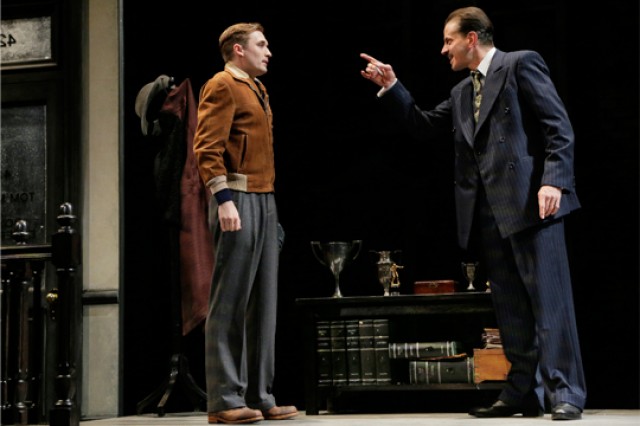
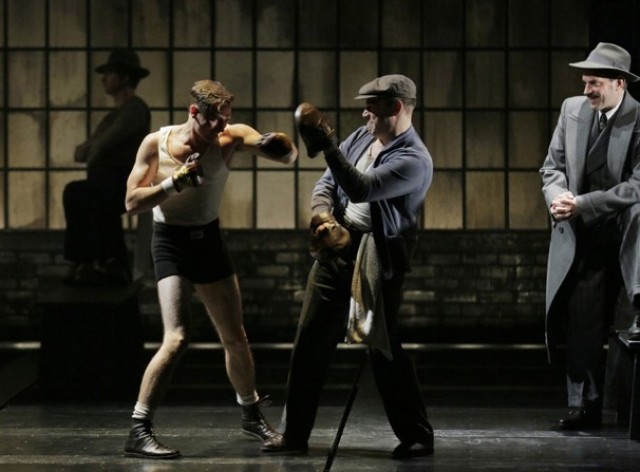

 Winner of both the Oscar for Best Foreign Language Film and the Palme d’Or at Cannes, Claude Lelouch’s A Man and a Woman is one of the most popular, and most unusual, romantic love stories ever put on film. Oscar-nominated Anouk Aimée stars as Anne Gauthier and Jean-Louis Trintignant as Jean-Louis Duroc, two people who each has a child in a boarding school in Deauville. Anne, a former actress, and Jean-Louis, a successful racecar driver, seem to hit it off immediately, but they both have pasts that haunt them and threaten any kind of relationship. Shot in three weeks with a handheld camera by Lelouch, who earned nods for Best Director and Best Screenplay (with Pierre Uytterhoeven), A Man and a Woman is a tour-de-force of filmmaking, going from the modern day to the past via a series of flashbacks that at first alternate between color and black-and-white, then shift hues in curious, indeterminate ways. Much of the film takes place in cars, either as Jean-Louis races around a track or the protagonists sit in his red Mustang convertible and talk about their lives, their hopes, their fears. The heat they generate is palpable, making their reluctance to just fall madly, deeply in love that much more heart-wrenching, all set to a memorable soundtrack by Francis Lai. Lelouch, Trintignant, and Aimée revisited the story in 1986 with A Man and a Woman: 20 Years Later, without the same impact and success. A new print of the original will be shown December 16-17 in a grand double feature with Eric Rohmer’s My Night at Maud’s as part of Film Forum’s two-week tribute to Trintignant, leading up to the theatrical release of the French star’s latest, Michael Haneke’s remarkable Palme d’Or winner Amour, which once again displays the actor’s unique range and sensitivity in an unforgettable performance that is likely to finally make him much better known in the United States, at the tender age of eighty-two.
Winner of both the Oscar for Best Foreign Language Film and the Palme d’Or at Cannes, Claude Lelouch’s A Man and a Woman is one of the most popular, and most unusual, romantic love stories ever put on film. Oscar-nominated Anouk Aimée stars as Anne Gauthier and Jean-Louis Trintignant as Jean-Louis Duroc, two people who each has a child in a boarding school in Deauville. Anne, a former actress, and Jean-Louis, a successful racecar driver, seem to hit it off immediately, but they both have pasts that haunt them and threaten any kind of relationship. Shot in three weeks with a handheld camera by Lelouch, who earned nods for Best Director and Best Screenplay (with Pierre Uytterhoeven), A Man and a Woman is a tour-de-force of filmmaking, going from the modern day to the past via a series of flashbacks that at first alternate between color and black-and-white, then shift hues in curious, indeterminate ways. Much of the film takes place in cars, either as Jean-Louis races around a track or the protagonists sit in his red Mustang convertible and talk about their lives, their hopes, their fears. The heat they generate is palpable, making their reluctance to just fall madly, deeply in love that much more heart-wrenching, all set to a memorable soundtrack by Francis Lai. Lelouch, Trintignant, and Aimée revisited the story in 1986 with A Man and a Woman: 20 Years Later, without the same impact and success. A new print of the original will be shown December 16-17 in a grand double feature with Eric Rohmer’s My Night at Maud’s as part of Film Forum’s two-week tribute to Trintignant, leading up to the theatrical release of the French star’s latest, Michael Haneke’s remarkable Palme d’Or winner Amour, which once again displays the actor’s unique range and sensitivity in an unforgettable performance that is likely to finally make him much better known in the United States, at the tender age of eighty-two.